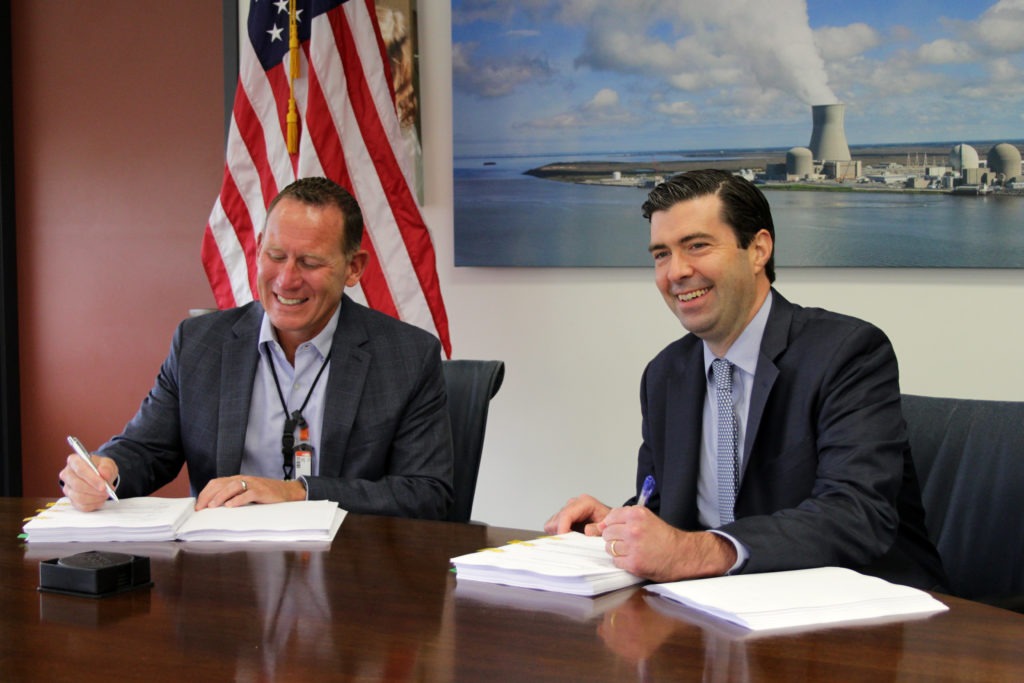TRENTON, N.J. (January 12, 2022) – The New Jersey Economic Development Authority (NJEDA) today issued a Request for Proposals (RFP) seeking a qualified entity to conduct a feasibility study for a world-class, flagship offshore wind research and development (R&D) testing facility as part of the Authority’s strategy to accelerate innovation for the offshore wind industry. The Offshore Wind Innovation Center Feasibility Study RFP can be found here.
The NJEDA, in support of the development of the Wind Institute, is seeking to secure the Garden State’s position as a leader in offshore wind technology research and innovation through this development to capitalize on New Jersey’s offshore wind investments and spur a robust ecosystem of offshore wind-related innovation activities. The firm selected through the RFP issued today will be responsible for providing the background review and market analysis, feasibility analysis, and implementation plans for this facility.
New Jersey has a rich history of developing advanced, world-renowned R&D facilities including: the legendary Bell Labs in Murray Hill and Holmdel; the Princeton Plasma Physics Laboratory, a U.S. Department of Energy national laboratory; the William J. Hughes Technical Center in Atlantic County; the Federal Aviation Administration’s premiere scientific research, development, engineering, and test site; and, the Coriell Institute for Medical Research in Camden, the largest stem cell bank in the world. The Authority considers the proposed offshore wind R&D facility to be a signature investment at a similar scale.
“We applaud EDA for issuing this RFP to determine the feasibility of an offshore wind innovation center,” said NJBPU President Joseph L. Fiordaliso. “Offshore wind is a key initiative of the Murphy Administration with a goal of 7.500 of offshore wind energy by 2035. At present we are more than halfway to that goal. We are looking forward to issuing our third solicitation later this year for applications that, if granted, will allow us to get closer to reaching our ultimate goal.”
New Jersey is a national leader in offshore wind with over 3,700 megawatts (MW) in the works, out of a targeted 7,500 MW by 2035. Further commitments by leading global industry firms to produce critical supply chain components in the Garden State, such as monopiles and nacelles will translate to direct and distinct opportunities for wind turbine component, subcomponent, and material innovation to flourish in New Jersey and for local suppliers to enter the offshore wind supply chain as mid- and lower-tier suppliers.
The Authority envisions the offshore wind R&D facility as a physical anchoring asset for testing, validating, and refining emerging technological and component innovations that demonstrate promise for the offshore wind market. New Jersey and the NJEDA, in support of the development of the Wind Institute, seek to achieve the following goals through this investment:
- Propel New Jersey forward as the U.S. East Coast hub for world-renowned offshore wind technology research and innovation;
- Support and foster emerging innovations and solutions to offshore wind market challenges and opportunities;
- Incentivize clustering and anchoring of offshore wind research and innovation investments and activities around and near this proposed facility and/or in the state;
- Leverage existing facilities and assets in New Jersey in developing this facility and clustering opportunities;
- Capitalize on New Jersey’s existing expertise and reputation for research and innovation across multiple sectors such as clean tech, information technology and life sciences; and
- Support opportunities for New Jersey-based businesses to expand and/or transition their product or service offerings for utilization in the offshore wind supply chain.
The estimated dates below are provided to interested Proposers for planning purposes only and do not represent firm commitment dates by which NJEDA will take action.
Key events:
- Question and Answer Period Ends: January 24, 2022 at 1:00 PM (EST).
- If required, Addendum with Q&A Responses, estimated: January 31, 2022.
- Proposals Due: February 23, 2022 at or before 1:00 PM (EST).
- Estimated Recommendation for Award: June 8, 2022.
- Agreement Execution Date: July 8, 2022.
The intent of this RFP is to award one, five-month contract for an offshore wind innovation center feasibility study, with one, three-month extension option, if deemed necessary by the Authority and dependent upon funding, to the responsible Proposer whose Proposal, conforming to this RFP is most advantageous to the Authority, price and other factors considered.
NJEDA will not provide special consideration after responses to this RFP are opened.
About the New Jersey Economic Development Authority
To learn more about NJEDA resources for businesses call NJEDA Customer Care at 609-858-6767 or visit https://www.njeda.gov and follow @NewJerseyEDA on Facebook, Twitter, Instagram, and LinkedIn.
###





